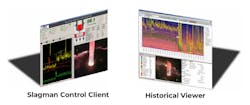Q&A: Advanced Sensor Technologies Promote Safer, More Efficient Manufacturing Processes
Advances in sensor technology have transformed manufacturing processes across various industries by enhancing precision, efficiency and safety. Sensors measure and monitor typical parameters like temperature, pressure and humidity. Industrial manufacturers also use them in more advanced applications like measuring vibrations, chemical compositions and capturing real-time data for better control of production processes.
Sensor technology helps manufacturers detect process deviations and anomalies as soon as they occur, minimizing waste and rework. They facilitate predictive maintenance, which reduces downtime. Advanced sensor systems also improve workplace safety by monitoring environmental conditions and detecting hazardous situations promptly.
With the emergence of Industry 4.0 and its focus on leveraging robots and smart machines to optimize performance, manufacturers need sensor systems designed to support automation. IoT, artificial intelligence and big data are common themes within the industrial automation mix. These and other developments are paving the way for future innovations in smart manufacturing and the new Industry 5.0 initiatives that are gaining momentum, which focus on the human aspect of technology applications.
In this Q&A, Vaibhav Modi, technical sales representative for Metallurgical Sensors Inc (Metsen), provides insights on some manufacturing processes benefiting from advanced sensor technologies. He also talks about trends impacting emerging and future industrial sensor systems.
Machine Design: What kinds of industrial sensors does Metsen design and implement?
Vaibhav Modi: Metsen designs and implements extreme vision camera systems for harsh environments; vibration and optical slag detection systems to identify the waste matter in molten metal; endoscopes for checking smelting furnace conditions; a system for high-precision rhomboidity measurement of billets, blooms and bars; and hydroweigh systems for molten metal weight measurement in the ladle and bucket. Each system involves advanced sensor technologies customized for the customer’s primary need.
READ MORE: 5 Reasons Metallurgy is Essential in Material Selection for Harsh Environments
MD: What industrial manufacturing processes benefit from Metsen’s sensor systems?
VM: Metsen’s core sensor solutions benefit continuous casting processes in steel mills, smelter operations in metal processing plants, automotive, food and beverage, pharmaceutical, pulp and paper, oil and gas, aggregates, robotics and general surveillance environments. They are used by companies globally.
For example, within the automotive production assembly environment, many sensor technologies are used for everything from precision welding and painting to safety performance testing before vehicles are delivered to customers. Industries with highly noxious encapsulated environments—such as petrochemicals, aggregates, food and beverage, and pharmaceuticals—can also benefit from integrating sensor technologies that allow safer process monitoring.
MD: Are there any universal issues or challenges that advanced sensor systems address across the process industries?
VM: All industries are united by three common objectives: safety and compliance, energy efficiency and process optimization, driven by best-in-class quality control. Advanced sensor systems uniquely address each objective. Sensors backed by custom software designed to monitor environmental conditions can ensure compliance with safety regulations. When hazardous conditions emerge, alerts are generated to ensure safe working conditions for employees.
Regarding energy efficiency, sensors can monitor energy consumption in manufacturing processes, analyzing energy usage patterns. This allows manufacturers to implement energy efficiency strategies, reducing costs and minimizing environmental impact. As for process optimization, analytics from sensor data can identify inefficiencies or bottlenecks in the process, allowing manufacturers to fine-tune operations, improve workflows and enhance overall efficiency.
Quality control sensors provide real-time data for continuous product quality monitoring. With the right sensor system in place, deviations from set standards can be promptly identified for immediate corrective actions to maintain best-in-class quality standards throughout production.
MD: Can you share a success story or a specific project using your sensor technology to improve existing machine operations?
VM: Major global companies in the iron and steel processing environment use our Slagman vibration slag detector (VSD) system to improve the safety and life of the steelmaking tundish, improve the quality of the yield they produce and reduce downtime. In the steel industry, downtime can cost as much as $10,000 per hour, so if advanced sensor systems can help save as little as 15 seconds off a critical process, more than $100K can be saved each month by not having to slow down the machines.
A large steel company had a caster producing high-quality billets focused on improving tundish life. The average tundish permanent (safety) lining life was 150 heats. A better refractory was tested, which increased the life to 250 heats. After implementing the VSD system, the life of the lining increased to 1,000 heats and the average tundish working-lining life doubled. Despite tundish slag decanting practices, there were two to three tundish breakouts (or hotspots) per month. After implementing the VSD system, tundish breakout was reduced to zero and the tundish decanting practice ceased. Zero breakouts are the safety goal of every steel mill operation.
The tundish drain-down design target in another steel plant was 4,536 kg (about 10,000.16 lb), but production averaged 5,443kg - 6,803kg (11,999.74 lb – 14,998.05 lb), even with tundish slag decanting practices. After implementing the VSD system, a significant drain-down average of 2,722kg (about 6000.98 lb) was achieved, and decanting ceased. Previously, the production crew used 90 to 95 tundishes on average per month with a throughput of 500 to 520 heats.
After implementing the VSD system, the caster reduced tundish consumption to an average of 65 per month and increased throughput from 600 to 630 heats monthly. The return on investment (ROI) was less than one month from start to finish and the safety benefits were an added value. Since each manufacturing environment has different criteria for improving production and quality, we consult with customers to design sensor systems to meet their unique needs and customize the system to fit their process.
READ MORE: Sensors That Promote More Efficient Industrial Workplaces
MD: What R&D innovations are you developing to advance sensors for greater machine efficiency?
VM: The companies we talk to and work with daily are pushing the implementation of new technologies, such as automation, artificial intelligence and cloud-based solutions for data storage. Metsen is innovating its EVCam series of extreme vision systems by using artificial intelligence in many ways, such as enabling the capability to learn from the images and data collected through the software.
Our systems can also be implemented with cloud technology and, as we move into Industry 5.0, we continue to embrace the interaction and collaboration between humans and technology. These kinds of developments we see taking shape will impact the development of industrial sensor systems.
MD: Is there anything else our audience of mechanical and design engineers should know about advanced sensor technologies?
VM: Software sits at the heart of the sensor system’s effectiveness, collecting, integrating and visualizing data in real time, so ensure the system you choose is designed to fully integrate with your plant’s production processes. Also, keep predictive maintenance in mind, which requires analytics to monitor equipment performance continuously. Maintenance can be scheduled proactively by detecting early signs of wear or potential failures based on sensor data patterns, minimizing costly unplanned downtime and repairs.
Finally, work with a team of highly skilled professionals who can provide you with top-notch customer service support from start to finish and provide continued support utilizing a remote monitoring management system.

